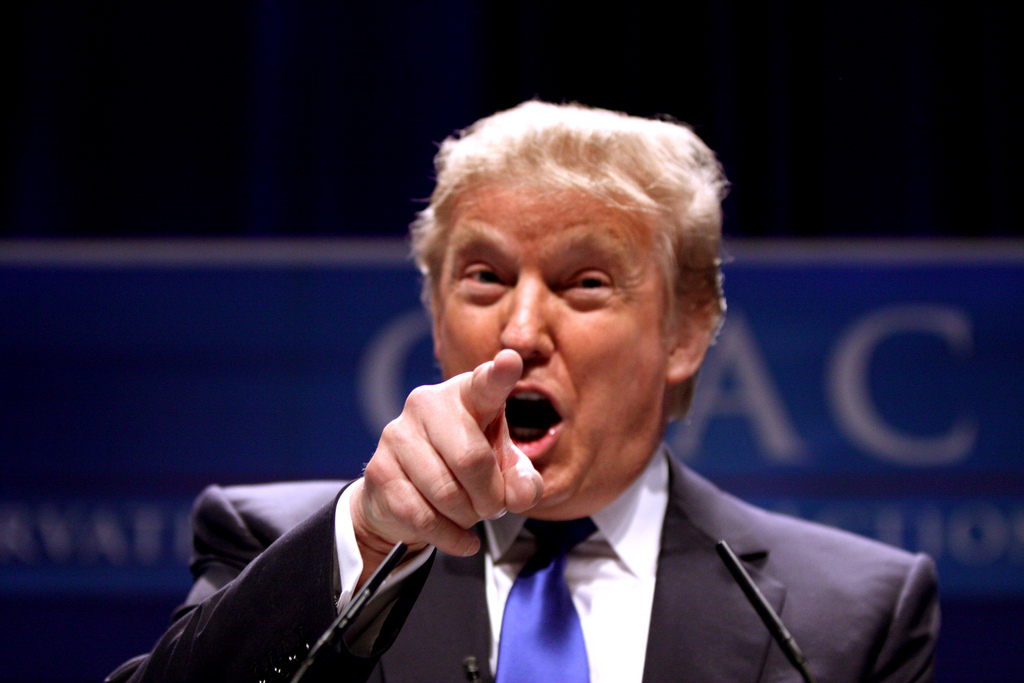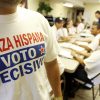
Part of Donald Trump’s presidential announcement speech, like that of any other candidate, was devoted to listing his strong points: ‘I’m really rich’. But what was remarkable about Trump’s speech was the energetic and almost infuriated heckling of a member of the audience, who shouted: ‘we don’t need nice!!’. Although audiences at candidates’ announcement speeches are almost always supportive, the heckler in this case made evident the growing ideological radicalisation of the average American citizen and the country’s increasing polarisation. The political and social life of the United States, as a result of history, election and campaign processes and geographical organisation, contributes to foster a self-serving loop in which specific ideologies feed off themselves, resulting in their radicalisation and their counterparts’ opposition.
The increasing radicalisation of presidential candidates is a clear instance. In the latest polls, Donald Trump positioned himself at the top of the republican list with 26.5% of the prospective vote (with Ben Carson following with 12%). He follows a list of candidates over the past few years that have been increasingly conservative with every presidential ticket. Among the Democrats, the surprising emergence of Bernie Sanders, an independent Senator from Vermont (who caucuses with the Democrats), should not be taken lightly. By the standards of the country’s political spectrum, Sanders counts as a socialist (not generally a compliment in the US) and is clearly the most left-leaning and thought-provoking candidate the American election system has seen in years. The Democrats might endorse a democratic-socialist candidate 15 years after they presented a ticket supporting Al Gore, a centrist candidate who at the beginning of his political career opposed gay rights and was pro-life. Even though Hillary Clinton is still the clear candidate for Democratic nomination, she will have to convincingly move towards the left in order to halt Sanders in his tracks, as he currently has 25% of the prospective vote and draws the largest crowds (Clinton is at 49.2%).
To understand the phenomenon it is necessary to look at the bureaucratic process through which candidates are elected. In the US, major candidates for the November election are backed by the party and are officially recommended by it in the ballot. The parties decide who to support (historically each party only backs one candidate) through caucuses and primary elections. What is important about the primary elections is that only registered voters affiliated to each specific party can vote in their corresponding elections.
Intuitively, the people formally associated to a party will be more radical in their opinions, so the candidates no longer reach out to everyone in order to be chosen but only to the party’s affiliates and donors. Candidates must comply with radically consistent left- or right-wing views. This means that they tend to make statements on the lines of Bernie Sanders’ call for a ‘political revolution’ and Mitt Romney’s 2012 ‘I am not concerned about the very poor’. It is difficult to determine whether statements like these faithfully reflect the candidates’ beliefs or whether they are merely aimed at the people who ultimately put their names on the ballot.
But elected offices are only a symptom. The number of ‘battlefield’ states, where both parties are strong, decreases yearly. It has got to the point where reputable news organisations such as Politico are already predicting how 43 of the 50 states will vote. According to a study by the Pew Research Center, people are increasingly associating with others with the same views, choosing to live in cities with a congenial ideology and seeing the opposing party as a threat to the nation’s progress. This radicalisation is also reflected by a change in voter turnout: in the 2014 midterm elections only 36.4% of the population cast a vote for the 114th Congress. People who are apathetic about both candidates and their ideologies (the centre) are less likely to vote, leaving only the more dedicated and extremist to decide their nation’s future.
It is easy to look at the situation and fail to see the differences with the current state of European politics. But there are two essential differences. First, the strength of the American two-party system prevents the centre from retaining any presence in the political arena, while in systems such as Spain’s and Germany’s new parties emerge and the original parties retain some of their power. Secondly, polarisation in Europe can be seen as a response to the crisis and the damage it has caused while in the US polarisation is growing regardless of the people’s wellbeing.
All these factors contribute to create a vicious circle in which, for instance, people only spend time with others who share their ideology and choose their own (radically biased) news sources. This causes inefficiencies that prevent the country from moving forward, with phenomena such as filibustering and the inability to generate new legislation because of the tensions between Congress and the President.

